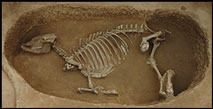Article contents
Guandimiao: a Shang village site and its significance
Published online by Cambridge University Press: 11 December 2018
Abstract

Extensively excavated village sites from the Chinese Bronze Age are rare. Information emerging from the analysis of the small Anyang-period village site of Guandimiao, however, challenges widely held assumptions concerning the Shang polity at Anyang and its hierarchical lineages based on war and sacrifice. Evidence for specialised pottery production and the presence of artefacts imported from Anyang suggest an unexpected degree of regional economic integration. Guandimiao is emerging as a site of revolutionary importance for understanding Anyang-period Shang political and economic networks, and in its significance to both Chinese archaeology and the study of early complex societies more generally.
- Type
- Research
- Information
- Copyright
- Copyright © Antiquity Publications Ltd, 2018
References
- 8
- Cited by


